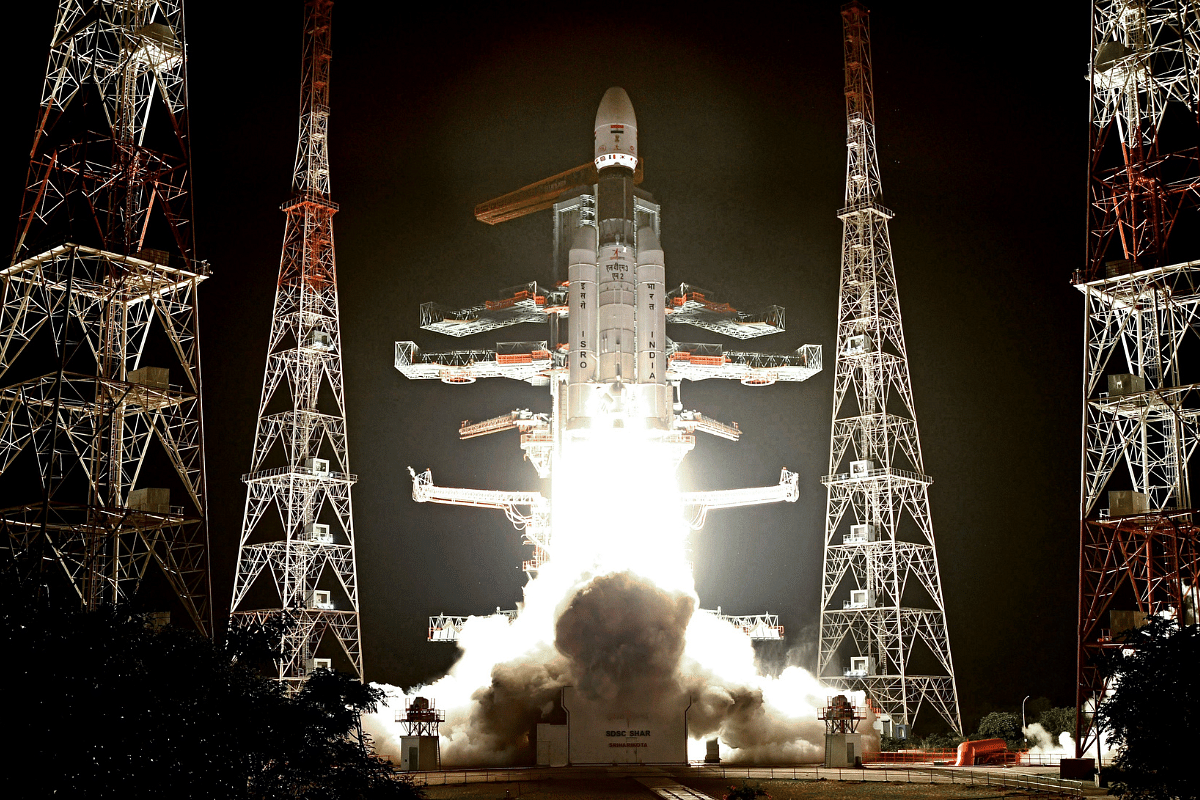Science
ISRO Mission Successful On Diwali Day: 36 OneWeb Satellites Placed In Intended Orbits
- "GSLV has made the most remarkable entry into the commercial launch service market,” NSIL chairman and managing director D Radhakrishnan said at the SDSC.

The LVM3-M2 mission successfully lifted off from the second launch pad at Sriharikota. (Photo: OneWeb/Twitter)
Diwali celebrations started very early on 23 October at the Satish Dhawan Space Centre (SDSC).
India’s heaviest rocket, Launch Vehicle-Mark 3 (LVM3), lifted off from Sriharikota at 00.07 hours (India time) with 36 satellites from OneWeb and placed them all successfully in their intended orbits.
OneWeb is an LEO satellite communications company from the United Kingdom (UK). India’s Bharti Enterprises is a major investor and shareholder in OneWeb and Sunil Bharti Mittal is the executive chairman of OneWeb.
The UK company had contracted NewSpace India Limited (NSIL), a central public sector enterprise under the Government of India’s Department of Space and the commercial arm of ISRO, for the LVM3-M2 mission.
With this launch, the LVM3, formerly called the Geosynchronous Satellite Launch Vehicle-Mark 3 (GSLV-Mk3), has made a successful commercial debut.
An announcement was made roughly 34 minutes into the flight that 16 of the 36 satellites were placed in their intended orbits.
Just then, ISRO chairman S Somanath walked up to the podium and said: “With the second operational mission of LVM3, and the very first commercial mission of LVM3, we have accomplished the orbit very accurately. Now the rocket is in its intended orbit.”
He said the separation of the satellites is a “very slow process” and that the separation of the remaining 20 satellites will be confirmed by data later. He was “hopeful” that it would be accomplished.
The confirmation of the separation of the remaining 20 satellites — and therefore, all 36 satellites — came in a tweet from ISRO at 1.42 am.
At 4.47 am, OneWeb confirmed contact with all 36 satellites.
This was truly a landmark mission for ISRO and especially NSIL.
It was the first commercial mission of the LVM3 with NSIL. It was the first time ever that LVM3 was lifting off with multiple satellites and injecting them all in low-Earth orbit. It also marked the largest payload, at about 6 tonnes, ever carried by an Indian rocket.
Now, LVM3 has officially put itself out there on the global commercial space launch market.
“I am proud to say I am really delighted and honoured that GSLV has made the most remarkable entry into the commercial launch service market,” NSIL chairman and managing director D Radhakrishnan said at the SDSC.
He pointed out that this mission demonstrated to “the entire world how to contract and execute the mission in less than three to four months.”
“The entire Team ISRO rose to the occasion, worked with full vigour, and systematically, as is the wont of ISRO,” LVM3-M2 mission director Bhaskar said about their approach to the assignment placed before them.
“I submit this success, as our chairman told, as a Diwali gift to all our Team ISRO,” he added.
India previously banked on its workhorse polar satellite launch vehicle (PSLV) to launch a total of 345 foreign satellites since 1999. The LVM3 has taken this figure up to 381 now.
“This effort of NewSpace India Limited would go a long way in enhancing India’s market share in the global space economy,” the NSIL chief has said in an earlier video.
OneWeb has now gone past 70 per cent of its planned satellite fleet to achieve their goal of providing internet connectivity around the world next year. The company says it’s on track to complete its constellation of 648 satellites in 2023 and deliver high-speed, low-latency connectivity worldwide.
OneWeb’s satellites are arranged in 12 orbital planes — with 49 satellites in each plane — 1,200 km above the surface of the Earth. Each satellite in the fleet takes 109 minutes to go around Earth. This ensures worldwide satellite coverage. The constellation operates in an LEO polar orbit.
The next launch of 36 OneWeb satellites, called the LVM3-M3 mission, will also be executed by NSIL.
Support Swarajya's 50 Ground Reports Project & Sponsor A Story
Every general election Swarajya does a 50 ground reports project.
Aimed only at serious readers and those who appreciate the nuances of political undercurrents, the project provides a sense of India's electoral landscape. As you know, these reports are produced after considerable investment of travel, time and effort on the ground.
This time too we've kicked off the project in style and have covered over 30 constituencies already. If you're someone who appreciates such work and have enjoyed our coverage please consider sponsoring a ground report for just Rs 2999 to Rs 19,999 - it goes a long way in helping us produce more quality reportage.
You can also back this project by becoming a subscriber for as little as Rs 999 - so do click on this links and choose a plan that suits you and back us.
Click below to contribute.
Latest